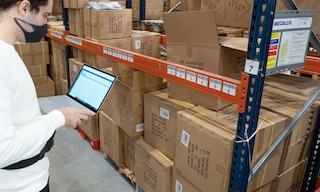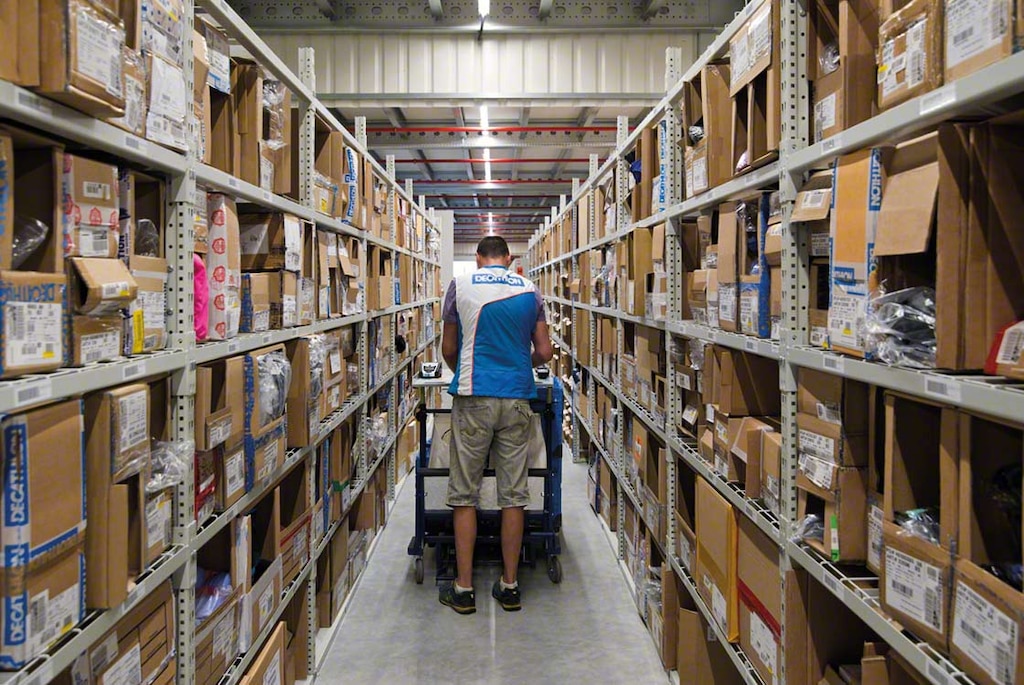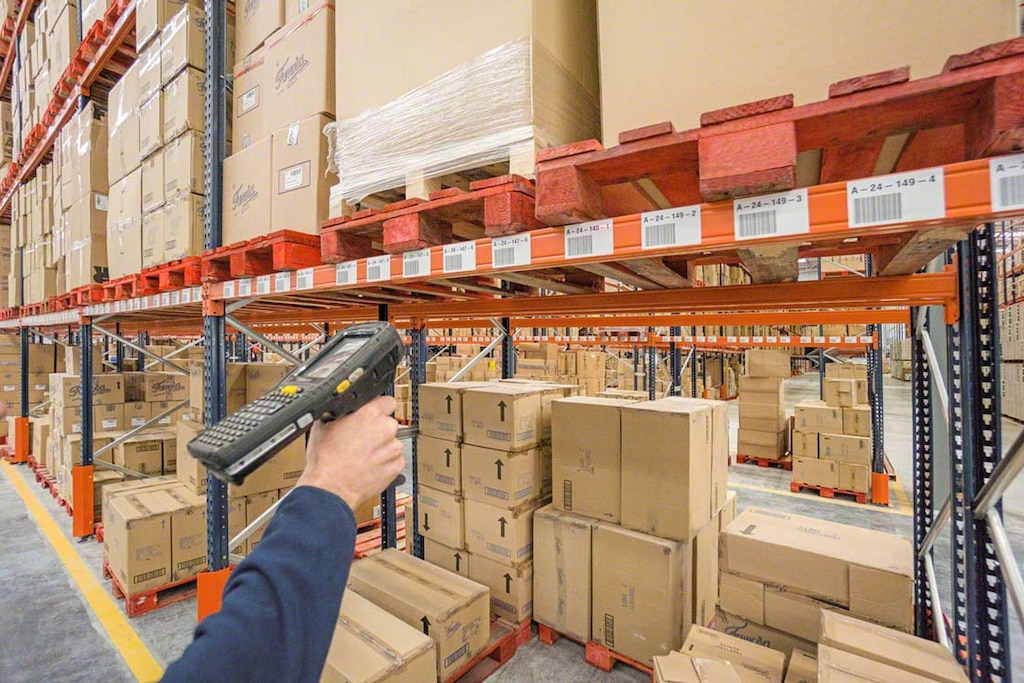
Stock control: the main warehouse operation
Stock control comprises knowing which merchandise you have at a given time in the warehouse. It’s an essential process for carrying out logistics operations properly, and it directly impacts customer satisfaction.
Imagine a customer's frustration when he/she purchases an order online but then has to wait weeks before receiving it due to lack of stock. This problem, resulting from poor inventory management, could tarnish the company’s reputation, in addition to raising logistics costs, leading to future losses.
In this post, we delve into stock control, highlighting why it’s such a crucial part of any company’s supply chain. We’ll also demonstrate how a warehouse management system helps to control stock, monitor goods in real time, and optimize flows.
What is stock control?
This operation consists of organizing and supervising the goods that enter and exit the warehouse. The aim of stock control is to achieve a balance between the items that have arrived and those that have been dispatched to thus determine the number of available units of each SKU.
This operation is fundamental for firms with an extensive product catalog, such as sports giant Decathlon. At its warehouse in Northampton, UK, equipped with picking shelves from the Mecalux Group, it manages 35,000 SKUs of various sizes and turnover (athletic shoes, swimming caps, technical apparel, etc.). At the same time, it dispatches a large volume of daily orders: 3,000 for online customers, and 50,000-60,000 items are sent to the franchise’s physical stores in the UK. So, how is it possible to manage and supply all those products and prepare all those orders? The answer lies in stock control.
Stock control has two basic objectives: to prevent stockouts that preclude companies from supplying customers without delay and to avoid overstock, which leads to additional storage costs.
For a company to manage its goods effectively, it first needs to carry out demand planning. That is, it needs to be aware of market fluctuations and of the seasonality of its product to maintain adequate stock levels in its facility. With this in mind, it can define the amount of product necessary to be able to run efficiently and organize its operations in advance.

Reasons for stock control
As explained above, the purpose of stock control is to have enough goods on hand to be able to work. Let’s see exactly why this operation should be prioritized:
- Competitiveness. By knowing the status of the products and their location in the facility, order processing is much faster and more streamlined.
- Customer satisfaction. When warehouse service is improved, so is customer satisfaction. Speedier, on-time, error-free deliveries generate more trust and, ultimately, increased future sales.
- Greater liquidity. Stock control helps to balance expenses, which translates into cash flow. By selling your stock, you recoup the money invested and can organize payments to obtain a healthy balance sheet.
- Cost reductions. Optimal inventory management does away with excess inventory as well as dead stock. Plus, properly distributing the products optimizes warehouse space (for example, instead of having two facilities with a multitude of products, the company has one with only the indispensable goods). And this lowers storage costs.
How to control stock in the warehouse
Stock control constitutes recording the products that enter and leave the facility. It also includes taking inventory counts to know the exact number of products available at a given time. This can be done manually, with pencil and paper. Operators print a list of the catalog of products in the warehouse and go up and down the aisles, counting the items in each location. Then, they record the quantities noted in the system. This manual process is known as physical inventory.
The drawback is that, being manual, it entails a high risk of error (when locating the items, counting them, writing down the number on the paper, entering those data into the system, etc.). The risk is even higher for businesses that handle a large number of products.
Likewise, physical inventory counts give the company a snapshot of the status of its warehouse over a very limited time. The business activity isn’t interrupted, so after accounting for the products, new goods continue to be received, while more orders are dispatched. In the end, the status of that inventory will have changed in very little time.
Therefore, the digitalisation of logistics and the integration of new technological capacities in areas such as storage, order prep, and transportation, among others, have provided greater security and precision. Technology not only facilitates stock control but also increases accuracy. Not even carrying out inventory management with Excel is viable, as it’s also subject to errors and not scalable. It would be necessary to use specialized storage software to expedite operations and maintain an exhaustive inventory.
Stock control software
It’s best to use a warehouse management system such as Easy WMS from Mecalux to exercise tight stock control. With this system, the business knows which stock it has at all times, in addition to its origin, location, and destination. As a result, the firm will have a perpetual inventory system, updated in real time.
This is achieved thanks to item coding. From the moment the goods arrive at the warehouse, they are identified with a label to ensure clear-cut traceability of each product.
The WMS then assigns a location to each product based on different parameters such as its characteristics or turnover. Appropriate distribution of the merchandise results in smoother operations. For example, the WMS optimizes picking routes so that operators travel the shortest distances and are speedier.

Monitoring stock
Companies compete to be the best. To do so, they must provide agile, high-quality, and error-free logistics service at the lowest possible cost. Stock control plays a fundamental role in achieving this, as a stockout means lost sales, customer complaints, management costs, and — in short — falling behind the competition.
The ideal solution for carrying out strict stock control is digitalization. It allows the company to record the products entering and leaving the warehouse and, thus, to count the available items.
A warehouse management system such as Easy WMS from Mecalux is the foolproof tool for controlling stock. This software has been implemented in more than 900 logistics facilities of companies in all sectors, including the retail, e-commerce, 3PL, technology and electronics, automotive, food, and pharmaceutical industries. Be sure to get in touch. We’ll show you everything it can do, namely, how it can help you to improve your organization’s performance.
